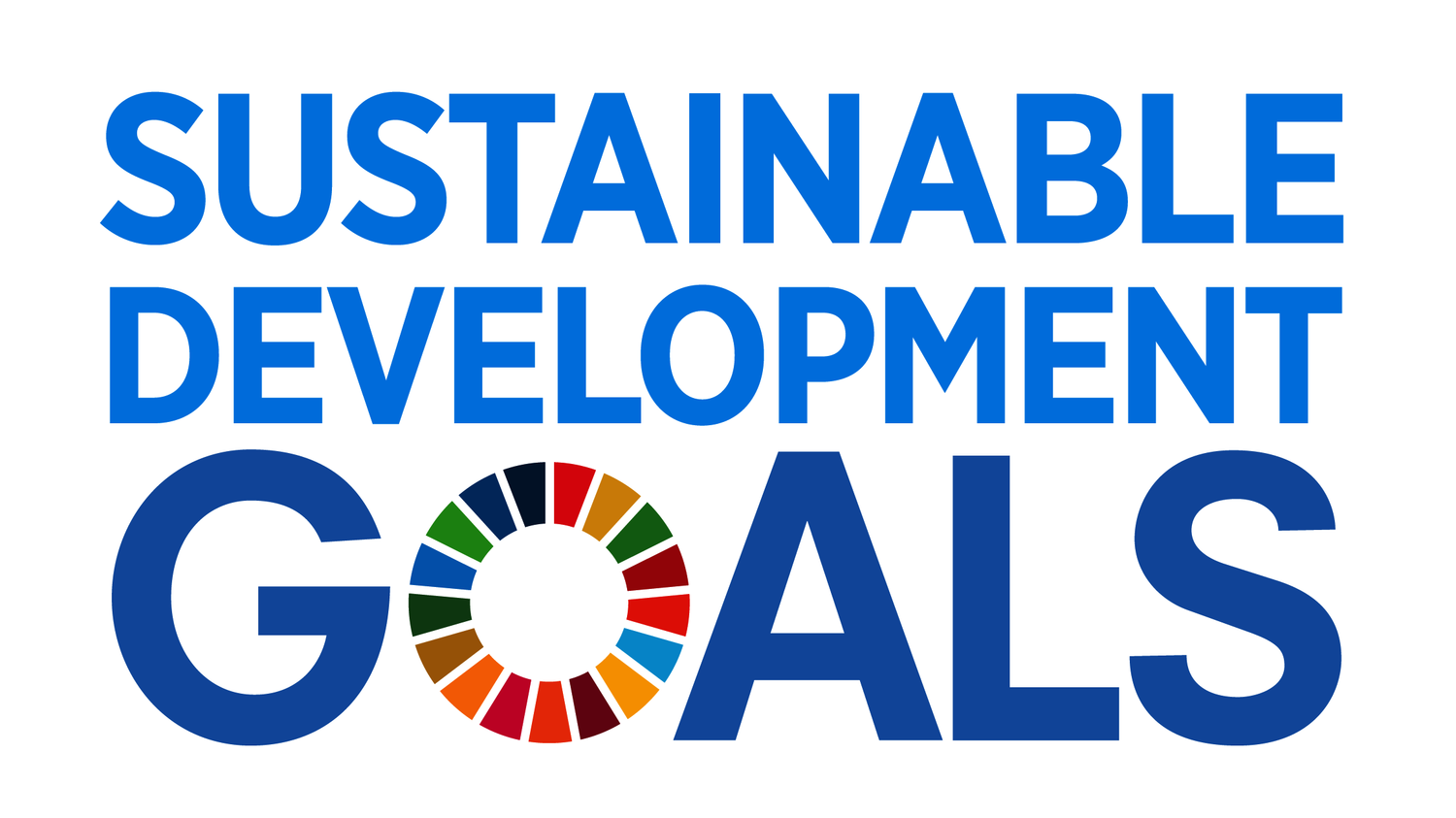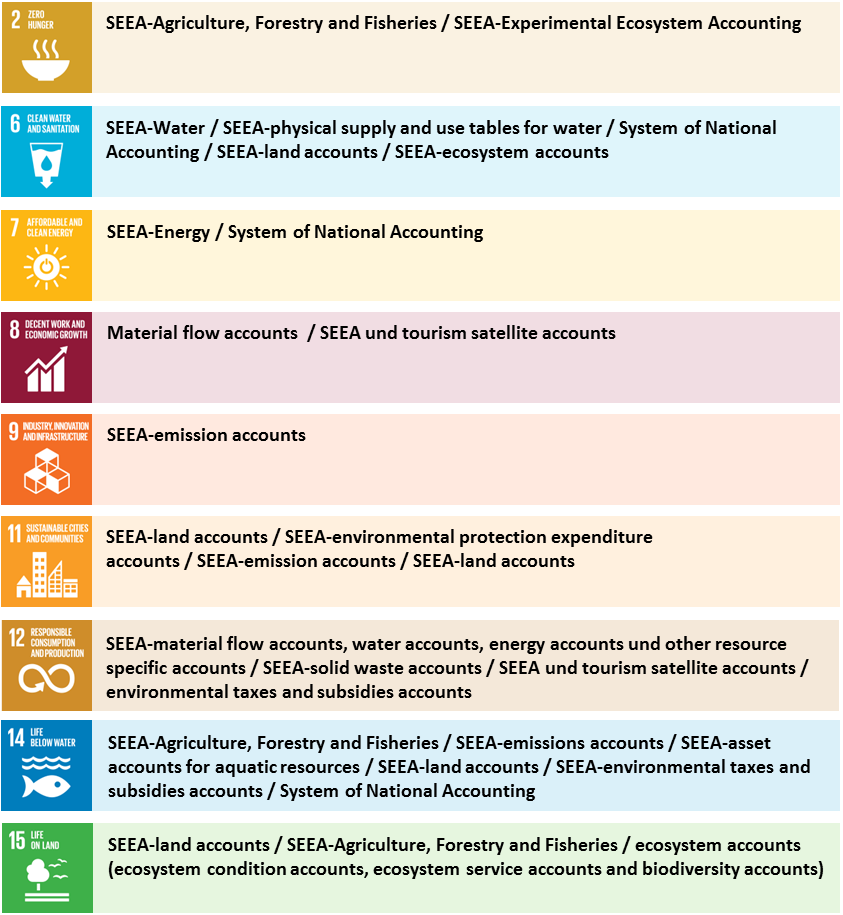Sustainable Development Goals and environmental accounts
In September 2015, the United Nations General Assembly respectively the Heads of State of the UN member states adopted the "2030 Agenda for Sustainable Development".
The objective of the Agenda 2030 is a sustainable economic, social and ecological transformation of our world. This shift towards greater prosperity and peace for the people and the planet should be given priority by fighting poverty, which is seen as the biggest global challenge for sustainable development.

Other key strategic themes of the 2030 Agenda include improving health and education, reducing inequalities, and economic growth, as well as environmental challenges such as climate change or the conservation of oceans and forests.
The implementation of the Agenda 2030 will be ensured with global development goals which are valid for 15 years and are universally applicable.
These Sustainable Development Goals (SDG) thus affect developing countries as well as the industrial nations.
17 goals and 169 targets were set in a broad consultation and negotiation process. They should stimulate measures and actions to implement the ambitious Agenda 2030.
SDG Indicators
A major challenge is the monitoring of the Sustainable Development Goals - this is achieved by objectives assigned to the individual goals.
The UN Inter-Agency and Expert Group on SDG Indicators (IAEG-SDGs) was responsible for developing a global SDG Indicator Framework. The list of indicators pictured therein currently contains 232 different indicators that have been agreed upon and which are assigned to the 169 targets. Due to multiple nominations of some indicators under two or three different targets, the complete list consists of 244 indicators.
A further detail adjustment of the indicators by the IAEG-SDGs will take place in the next years, in addition it is constantly checked whether previously missing indicators, e.g. through methodical or technical improvements, can be included in the set in the future.
SDG and environmental accounting
The System of Environmental Economic Accounting (SEEA) underlying the Environmental Accounts is a statistical framework that can cover a wide range of environmental data and environmental information requirements.
National and international environmental accounts can, for example, provide data and information on the SDG indicators to monitor the progress towards achieving the goals and targets.
Annex III of the UN publication "System of Environmental-Economic Accounting - Applications and Extensions" contains a tabular comparison of which Sustainable Development Goals and Sustainable Development Goal Targets are covered by SEEA publications and tables.
In some cases, the required information and data can be obtained directly from the different SEEA products, while in other cases a combination with information from the System of National Accounting (SNA) is required. Because of the same classifications and accounting rules, such a combination is easily possible.
The following diagram shows the relevant SDGs and in extracts the relevant SEEA data sources.
Indicators that are based on international standards, such as SEEA, have the advantage that their comparability across countries is better and data quality is consistently higher due to the well-defined calculation methodology.
For this reason, SEEA and environmental accounting can continue to play an important role in the further development of existing SDG indicators and in the development of new indicators in order to ensure the progress of SDG target achievement, especially where to date there are no or only indicators with insufficient data and quality are available.
In Austria, a national SDG indicator set is currently in use and under further development, where environmental accounting data are already being used. Mainly it is about data from material flow accounting, as shown in the following figure for Goal 8 (Decent work and economic growth).


